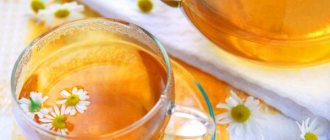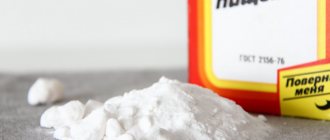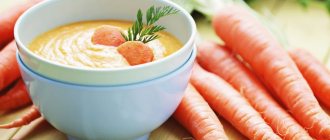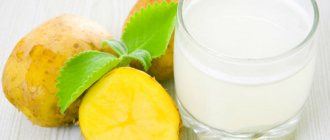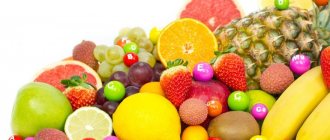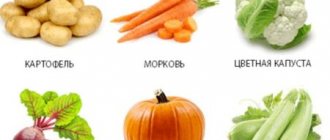Pancreatitis is a disease caused by the development of inflammatory processes inside the pancreas. Many patients suffering from this disease ask their doctor: “What juices can you drink for pancreatitis?” This article will describe the types of juices that are recommended for consumption for chronic inflammation of the pancreas.
Pancreatitis is one of the pathologies of the digestive tract that requires changes in diet. Any violation of the diet can lead to an exacerbation of the disease and to the re-development of pain and bowel dysfunction. It is customary to distinguish two large subgroups of this pathology: chronic and acute pancreatitis. The first type of disease is subject to a conservative type of treatment using replacement medications and a special diet aimed at reducing the load on the pancreas.
Alcohol should not be consumed if you have pancreatitis.
What juices can you drink?
The pancreas has many important functions necessary for the normal functioning of the human body. Pancreatic excretion, secreted when food enters the gastrointestinal tract, digests foods high in protein and fat. With the development of inflammatory processes in the organ, the breakdown of “heavy” foods significantly decreases. That is why doctors recommend that their patients avoid overly fatty and heavy foods.
A similar principle remains true when selecting drinks. Juices for pancreatitis should be freshly squeezed, without preservatives and various sweeteners. Large concentrations of sugar in the drink stimulate increased secretion of pancreatic excretion, which is undesirable for pancreatitis. It is recommended to dilute the juice with clean, filtered water.
Orange, lemon and grapefruit juices are not recommended for consumption in case of inflammation of the pancreas. Otherwise, the likelihood of developing an exacerbation of the disease increases. In addition, it is forbidden to drink squeezed cranberries, grapes and currants. The activity of the acids contained in these products does not decrease even after adding water to the drink.
The information in the article is not a guide to action. Only a doctor can prescribe an effective diet that promotes healing of the pancreatic parenchyma.
Homemade tomato juice recipe
Making tomato juice at home is absolutely not difficult.
- To do this you will need 1-1.5 kg of fresh tomatoes and 2 teaspoons of salt.
- Vegetables must be thoroughly washed and immersed in boiling water for 1-2 minutes, and then also in cold water for 1-2 minutes.
- After this treatment, the skin can be easily removed from the tomatoes.
- The tomato pulp should be rubbed through a colander or sieve, add salt.
- The resulting mixture can be poured into clean and sterilized jars, then closed with a metal lid and the drink itself in the jars sterilized.
- This will complete the preparation of tomato juice reserves for the winter.
Thus, you can drink tomato juice for pancreatitis, but only during a period of stable remission, so as not to create unnecessary stress on the sick body. You should start drinking it only after your doctor’s permission, and you should drink only a natural drink without any additives, which can be prepared at home.
Vegetable juices
Various drinks based on potatoes, pumpkin, and tomatoes will become an important component in the effective treatment of pancreatitis. Vegetable juices in controlled volumes promote better healing of the pancreatic parenchyma and reduce the severity of pain.
Potato juice
Potatoes are known not only as a tasty and nutritious side dish, but also as an effective remedy in the treatment of pancreatitis. Its juice is considered an excellent remedy in the fight against this disease. For pressing, it is necessary to take potatoes without eyes or damage. Potato squeeze should be drunk immediately after preparation, because under the influence of oxygen it begins to lose all its healing effect. With regular consumption of the drink, it is possible to get rid of signs of inflammation of the parenchyma and accelerate regeneration in the pancreas.
Carrot juice for pancreatitis goes very well with potatoes. By mixing these drinks, it is possible to improve the taste and enhance the beneficial effect on the pancreas. To prepare the “mix” you will need half a glass of each type of juice. The drink is consumed immediately after preparation.
Beet juice
Squeeze is considered more useful compared to boiled and heat-treated beets. When cooked, beets lose a significant part of their own beneficial microelements and chemical compounds. Is it possible to drink beet juice if you have pancreatitis? It is possible, but not in the acute form and not in the acute stage. Beetroot juice should be dosed carefully to avoid diarrhea syndrome and the development of hyperglycemic conditions.
Frequent consumption of beets increases the risk of developing pain syndrome
Carrot juice
Is it possible to drink carrot juice if you have pancreatitis? Carrots are popular among lovers of vegetable drinks due to their high content of vitamins and microelements. The healing properties of carrots have made it an excellent remedy for the treatment of pancreatitis. It must be remembered that fresh carrots can increase the load on the pancreas, so nutritionists recommend subjecting them to heat treatment before consumption.
It is also recommended to use fresh carrots in combination with potato juice. This will enhance the therapeutic effect of both products. It is not recommended to consume carrot juice for pancreatitis in a volume of more than 200 ml per day. Otherwise, there is a high probability of developing “carrot yellowness”.
Cabbage juice
It is recommended to use cabbage squeeze only if you are sure that it will not lead to unwanted reactions from the digestive tract. The most appropriate is to drink seaweed drinks. It has the best effect on the gastric mucosa and also prevents the development of dyspeptic symptoms.
Sauerkraut juice also has beneficial effects. It is necessary to consume 70 ml 15 minutes before meals. In this case, the fermentation must take place in a special way. It is not recommended to use various spices and fresh carrots. With regular intake of cabbage drink, the severity of pain syndrome is reduced, and digestion is also normalized.
Pumpkin juice
Is it possible to drink pumpkin juice if you have pancreatitis? Thanks to pumpkin juice, it is possible to reduce the severity of pathological processes during inflammation of the pancreas. This drink is recommended for consumption even by patients suffering from high stomach acidity. By adding pumpkin seeds to your food you can make your food more piquant and palatable. Pumpkin is a unique product that can be consumed in any form for pancreatitis. It must be said that juice contains the greatest amount of nutrients.
Benefits of pumpkin juice:
- Removes excess liquid;
- Strengthens the myocardium;
- Helps eliminate toxins;
- Low calorie content;
- Improves vision.
Pumpkin juice for pancreatitis should be drunk half a glass daily, 30 minutes before meals. Despite all the beneficial effects on the body, some people with individual intolerance may develop an allergic reaction to this product. The complex of useful vitamins and microelements contained in pumpkin can reduce the severity of inflammation in the pancreas, as well as speed up regenerative processes.
Tomato juice
Tomato juice can be used for chronic pancreatitis only in the stage of stable remission. During the period of exacerbation of the disease, substances contained in tomatoes can intensify pathological reactions developing inside the pancreas. Before drinking tomato juice, it is recommended to dilute it with boiled water. To begin with, the ratio of juice to water should be 1:2. Gradually, the juice concentration increases and the water content decreases. Ideally, you need to reach a 2:1 ratio of juice and water, respectively. Patients with a favorable type of disease can even drink tomato juice undiluted, but only in small volumes.
When consuming large amounts of tomato juice, the risk of developing an exacerbation of the disease increases. To enhance the healing effect, it is recommended to prepare a mix of tomato, pumpkin and carrot juice.
Typical localization of pain during exacerbation of pancreatitis
Tomato values
It is difficult to imagine that a plant with tasty and healthy fruits was decorative for a long time. They decorated flower beds and gazebos. A wild representative from the Solanaceae family forms dense thickets up to 1.5 m in height, and the weight of the berries is less than 1 g. An amazing “compliment” to breeders - fruits, for example, of the Bull Heart variety, can weigh up to 700 g.
Medicinal berries have been found to contain high levels of:
- metal cations (potassium and iron);
- phosphate anions;
- vitamins (A, B1, B2, C, E);
- sugars;
- bioflavonoids.
The pulp of the fruit and the juice of the vegetable have a positive effect on the cardiovascular system. When eating tomatoes, blood vessels are cleansed of cholesterol plaques. The antisclerotic effect is complemented by a diuretic effect. In people with hypertension, blood pressure gradually decreases.
Tomatoes are dietary products. The tender pulp of their fruits is easily digestible and does not irritate the mucous membrane of the digestive tract. The alkali metal cation potassium, contained in large quantities, promotes the active removal of excess fluid from cells.
Tomatoes are useful for metabolic disorders. By slightly increasing blood sugar levels, their glycemic index is up to 30, they help with fatigue, disruption of the brain and nervous system. Diabetics are advised to consume whole fruits. At the same time, the synthesis of hormones is stimulated, the body's cells are rejuvenated, mood improves, sleep and vision improve.
Little-known juices
There are several products that can have a beneficial effect on the functioning of the digestive tract, however, they are not very popular among patients with pancreatitis, for example, apples. To make fresh apples, apples must be selected from non-acidic varieties. Store-bought apple juice contains large amounts of citric and sorbic acid, so consuming it is highly not recommended.
For some reason, few people suffering from pancreatitis know about the positive effect of Jerusalem artichoke on the functioning of the pancreas. Jerusalem artichoke squeeze can reduce the severity of pathological processes inside the pancreas, as well as improve its performance and normalize the activity of the synthesis of endogenous and exogenous compounds.
Not many people know about the medicinal properties of black radish. To prepare, you need to peel the fruit and squeeze out all the juice. This drink is recommended for consumption together with honey. You should take 70 ml of juice three times a day. The healing effect is observed only with regular use for 1.5 months.
Herbal juices
Juices prepared from herbs have a restorative and relaxing effect not only on the pancreas, but also on the entire gastrointestinal tract. Dandelion juice mixed with rice water is very popular. In addition, you can make a decoction based on dandelion roots. Dandelion drinks help normalize the electrolyte balance in the body, as well as reduce the concentration of glucose in the blood and urine. The juice should be taken 70 ml twice a day.
The pancreas is a small organ of the digestive system, which is still capable of providing a person with many unpleasant moments, especially if there are problems with its functioning. Then the patient is forced to give up most of the previously consumed foods. If you have problems with the pancreas, you must adhere to a special diet called 5P. This will help avoid the occurrence of acute pancreatitis or the transition of chronic to acute form. There are a number of prohibitions on the use of certain foods that should be followed in case of chronic pancreatitis during recovery after an exacerbation or regardless of it. First of all, the ban applies to alcoholic beverages and certain medications. Restrictions are also introduced regarding fruits and vegetables. What vegetables can you eat without fear if you have pancreatitis?
Beneficial or harmful in case of illness
Fresh tomato juice can both benefit patients with pancreatitis and cause harm. It depends on the form of the disease and the amount of juice drunk.
A tomato drink contains a large amount of vitamins and microelements necessary for the proper functioning of the human body. It contains vitamins B, A, C, PP, H, E, as well as potassium, iron, zinc and magnesium.
Healthy vegetables are also a source of glucose and fructose, valuable organic acids: oxalic, malic, citric.
In addition, tomatoes contain the antioxidant lycopene, which prevents the formation of cancerous tumors, inflammation and atherosclerosis.
Regular consumption of the vegetable drink promotes the formation of serotonin and is a prevention of depressive conditions.
Tomato juice has low calorie content and low fat content, which makes this product a healthy drink for pancreatitis. In addition, the drink removes waste and toxins from the body, helps normalize the digestive system, destroys microbes, and increases the level of hemoglobin in the blood.
Tomato juice is also useful during lactation; it increases the amount of milk in a nursing woman.
In acute pancreatitis, the drink will be harmful. Diarrhea and increased gas formation may occur. In addition, due to the choleretic effect of the juice, the activation of aggressive enzymes is possible. The organic acids contained in the drink stimulate the secretory function of the stomach, which can be dangerous in acute pancreatitis.
Vegetables for pancreatic disease
If you have pancreatic diseases, you need to eat right
Tomatoes. Should you eat tomatoes if you have pancreatitis? Nutritionists cannot give a definite answer to this frequently asked question. Some argue that tomatoes are extremely healthy because they contain a large amount of fiber, which is so necessary for the gastrointestinal tract. Tomatoes also help remove cholesterol from the blood, which is very valuable for the functioning of the pancreas.
Another group of nutritionists is confident that eating tomatoes during pancreatitis is strictly prohibited, especially during its exacerbation. But both of them are unanimous in the opinion that under no circumstances should you eat unripe tomatoes, which contain many toxins.
Freshly squeezed tomato juice turns out to be a very useful product, but not produced under industrial conditions. It has a beneficial effect on the pancreas, stimulating its work. The combination of tomato and carrot juice is especially good for these purposes. Tomatoes can also be eaten stewed or baked. But in everything you need to adhere to the rule of the golden mean, even in eating healthy foods.
Tomato juice has a choleretic effect, so you should not drink it during a crisis of chronic pancreatitis. This can worsen the situation, since secondary reactive pancreatitis may occur, as with cholelithiasis. The result can be very unfavorable, including disability or death. Thus, you can consume tomatoes and tomato juice during the period of remission of chronic pancreatitis, when there is no pain, ultrasound results do not show swelling, and tests show normal levels of diastase, elastase, and amylase.
Cucumbers. Cucumbers are very rich in vitamins and various microelements, despite the fact that 90% of their composition is water. If you have pancreatitis, you can definitely eat cucumbers. Moreover, there is a cucumber diet, which is often prescribed for pancreatitis. Over the course of a week, a person should eat 7 kg of cucumbers, which relieves the pancreas and prevents inflammation in it. But, you should know in moderation in everything; excessive consumption of cucumbers, especially those containing nitrates or pesticides, will not only not be beneficial, but can even cause harm.
Cabbage. For pancreatitis, any cabbage can be consumed only after it has been dried or boiled. Sauerkraut is very irritating to the mucous membranes, so you should not eat it. In its raw form, you can occasionally consume only Chinese cabbage, but you should remember that after an exacerbation, any new type of cabbage should be introduced gradually. What do nutritionists say about seaweed?
The usefulness of seaweed is an indisputable fact, since it contains essential microelements such as nickel and cobalt, which ensure normal functioning of the gland.
If you have pancreatitis, you can eat seaweed, but only for the population of Southeast Asia, since their enzymatic system differs from that of Europe. Even the instructions for Japanese medicines contain a warning that when taken by Europeans, the medicine may be ineffective. Therefore, seaweed should not be consumed if the pancreas is inflamed, especially during a crisis. This product is more similar in composition to mushrooms than to other types of cabbage, and its disposal will require the release of large amounts of pancreatic enzymes, which will lead to worsening inflammation.
For this reason, seaweed, like mushrooms, is not allowed to be given to children under the age of 12, since they do not yet have the necessary enzymes, and to patients with pancreatitis. Broccoli, like cauliflower, are very healthy foods, but for pancreatitis they should be consumed stewed or boiled. White cabbage, which is so often found on our table, due to the content of hard fiber in it, is not allowed to be eaten raw. Only after heat treatment can it be eaten, but not often. And, of course, you should remember that any fried vegetables are contraindicated.
Features of preparing a dietary product
To prepare tomato juice, it is necessary to select the ripest, high-quality fruits. During off-season seasons (winter, spring), vegetables are grown in greenhouses. The fruits contain chemicals from fertilizers that enhance growth. Compounds that often exceed the maximum permissible standards have negative effects on the human body.
In the process of preparing raw materials, the remaining shoots and stalks are removed from the berries. It is better to use sweet varieties of tomatoes (Honey Drop, Staroselsky). The color of the fruit does not affect the quality of the juice. Rinse the vegetables under running water and pass through a juicer.
When using a meat grinder or blender, you have to additionally filter the resulting liquid. The apparatus for squeezing fruit pulp has such a function.
The juice is placed in an enamel pan so that it does not oxidize. You can add salt per 1 kg of tomatoes - 1/2 tbsp. l. sodium chloride. Boil for 10–15 minutes. To obtain a puree, you need to boil until the mass becomes thick. Subsequently, 1-2 tablespoons of tomato paste can be diluted with a glass of boiled water.
Place the liquid or thick mass in sterilized small glass jars (0.5-0.7 l). Close using a special key and seal it with a tin lid. Store in a cool, dark place, cellar. Or cover with parchment paper and tie, such supplies should be kept in the refrigerator.
Fruits for pancreatitis
Not all fruits and vegetables can be eaten with pancreatitis
The consumption of fruits for pancreatitis is also strictly limited. It is not advisable to eat sour fruits containing coarse fiber, especially during an exacerbation. You can eat fruits only 10 days after the start of remission of pancreatitis. Chronic pancreatitis also does not allow you to abuse fruits; from the list of permitted ones, it is enough to eat one fruit a day. Naturally, the benefits of eating fruits are greatest, because they contain many vitamins and microelements, which are valuable for the pancreas, but the coarse fiber content disrupts its functioning.
The list of allowed fruits includes: strawberries, melon, watermelon, sweet green apples, avocado, pineapple, banana, papaya. You cannot eat mangoes, all types of citrus fruits, cherry plums, sour apples, plums, peaches, and pears. During the period of remission, the consumption of various fruits is allowed, but only heat-treated ones. But you should follow certain rules when eating fruits with pancreatitis:
- Only fruits from the list of permitted fruits are allowed to be eaten, and they must be thoroughly chopped or ground.
- Fruits must be subject to heat treatment (in the oven or steamer) before consumption.
- It is forbidden to eat more than one fruit throughout the day.
Along with the list of permitted and prohibited fruits, you should also know the list of medications that can be taken if you have consumed a prohibited fruit. The question often arises: is it possible to eat bananas and strawberries if you have inflammation of the pancreas? Most nutritionists are of the opinion that these fruits will not cause harm to the pancreas if they are eaten in small quantities and not during an exacerbation.
Natural juice from strawberries and bananas is considered especially beneficial for the pancreas; it contains many vitamins and tastes good.
Useful properties of tomatoes
North America is considered the birthplace of tomatoes. They came to Europe thanks to Christopher Columbus, where they gained popularity. Nowadays tomatoes are widely distributed throughout the world. Nutritionists consider it a very healthy vegetable because it is rich in elements such as:
- Vitamins A, B, C, E, H and PP;
- Beta carotene;
- Almost all the mineral elements necessary for the body (potassium, magnesium, iron, zinc, molybdenum, and so on);
- Necessary organic acids: succinic, oxalic, tartaric, citric, malic;
- Sugar in the form of glucose and fructose.
Thus, by eating a tomato, a person receives almost the entire necessary set of nutrients, which are easily absorbed. Tomatoes processed into juice not only do not lose their beneficial properties, but on the contrary, they acquire new ones. In particular, a tomato drink:
- Promotes the removal of toxins from the body, including heavy metals;
- Stabilizes metabolism and blood pressure levels in the body;
- Kills germs;
- Helps increase milk supply in nursing mothers;
- Provides prevention of cancer;
- It has a positive effect on blood composition, increasing hemoglobin levels and normalizing glucose levels.
However, it must be borne in mind that tomatoes also have a choleretic and diuretic agent, so tomato juice for pancreatitis should be consumed carefully and only on the recommendation of a doctor.
Alcoholic drinks for inflammation of the pancreas
If your pancreas hurts, fried meat is simply contraindicated!
The pancreas, compared to other organs of the digestive system, is most susceptible to the toxic effects of alcohol. It, unlike the liver, does not contain an enzyme that can break down an alcoholic drink. Often (about 40% of cases) acute pancreatitis develops after a feast with heavy drinking and unhealthy fatty or fried foods.
Drinking alcohol during chronic pancreatitis leads to repeated cases of acute pancreatitis, which affect the functionality of the pancreas and lead to its anatomical destruction. And, unlike the liver, the pancreas does not have the ability to recover.
Each case of alcohol consumption leads to an increase in the number of fibrosis lesions, which simply means that the gland is rotting.
